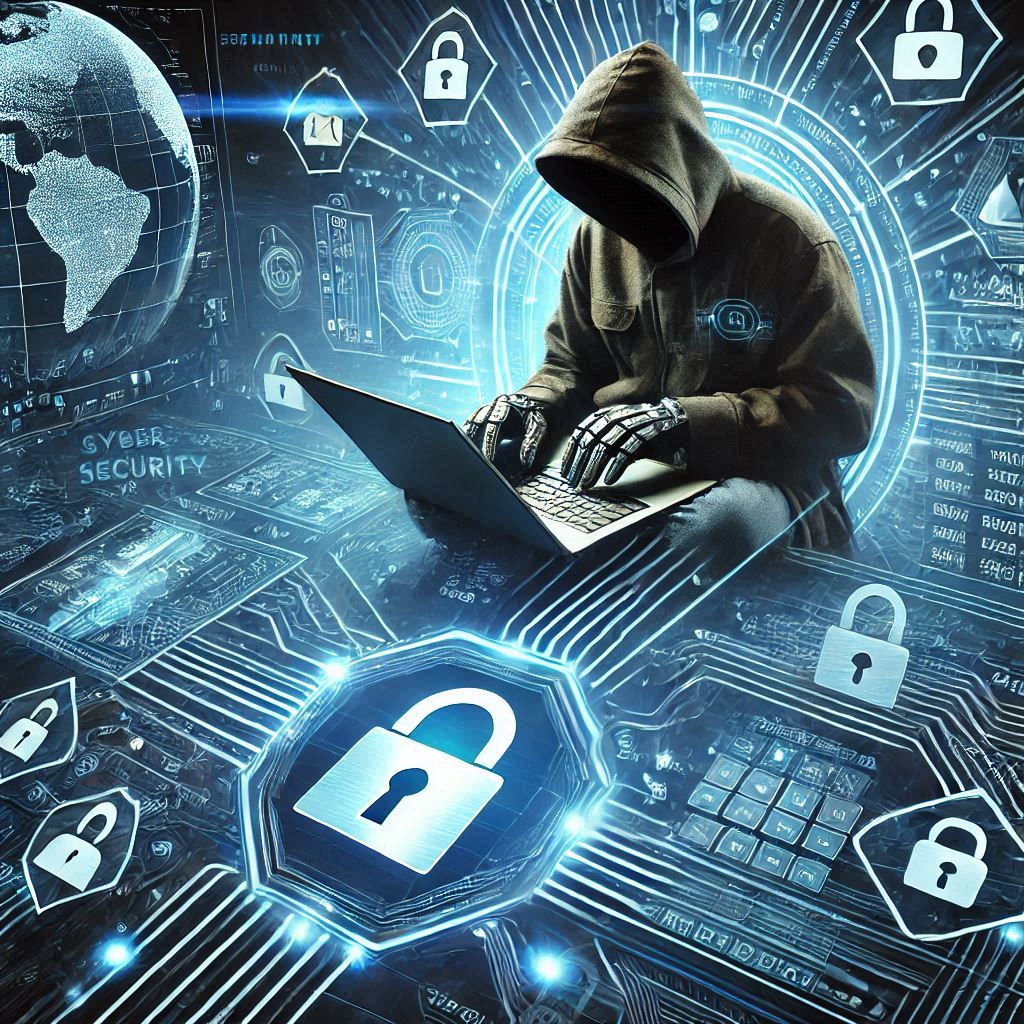Introduction
In our increasingly digital world, cybersecurity has become a critical topic for everyone from individuals to large corporations. With the rise of technology, the threats to our personal and organizational data have also escalated. But what exactly is cybersecurity, and why should you care? Let’s dive deeper into this essential field.

What is Cybersecurity?
At its core, cybersecurity refers to the practices and technologies designed to protect computers, networks, programs, and data from unauthorized access, attacks, or damage. Additionally, It encompasses everything from securing personal devices to protecting vast corporate networks.
Importance
Every day, we rely on technology for communication, banking, shopping, and more. However, this reliance comes with risks. Moreover, Cyberattacks can lead to data breaches, identity theft, and financial loss. According to recent statistics, cybercrime costs the global economy trillions of dollars annually. This staggering figure highlights the importance of robust cybersecurity measures.
The CIA Triad: The Foundation of Cybersecurity
To understand cybersecurity better, we must explore its foundational principles known as the CIA Triad:
1. Confidentiality
Firstly, Confidentiality ensures that sensitive information is accessed only by authorized individuals. Additionally, Techniques such as encryption and access controls help maintain confidentiality. For example, when you send an email containing personal information, encryption ensures that only the intended recipient can read it.
2. Integrity
Integrity involves maintaining the accuracy and trustworthiness of data over its lifecycle. Moreover, this means that data cannot be altered or deleted by unauthorized users. Checksums and hashing are common methods used to ensure data integrity.
3. Availability
Availability guarantees that information and resources are accessible when needed. Then, this is particularly crucial for businesses that rely on their networks for operations. Redundancy and failover systems are often implemented to ensure high availability.
Common Cyber Threats
Understanding common cyber threats is vital for anyone looking to enhance their cybersecurity knowledge. Here are some prevalent threats you should be aware of:
1. Phishing Attacks
Phishing attacks involve tricking individuals into providing sensitive information by masquerading as a trustworthy entity in electronic communications. Furthermore, these attacks often come in the form of emails or messages that look legitimate but contain malicious links.
2. Ransomware
Ransomware is a type of malware that encrypts a victim’s files, rendering them inaccessible until a ransom is paid. Moreover, this type of attack has seen a significant rise in recent years, targeting both individuals and organizations.
3. Malware
Malware is malicious software designed to harm or exploit any programmable device or network. This category includes viruses, worms, trojans, and spyware.
4. Denial-of-Service (DoS) Attacks
DoS attacks aim to make a service unavailable by overwhelming it with traffic from multiple sources. Moreover, this can disrupt business operations significantly.
Best Practices
Now that we’ve covered the basics of cybersecurity and common threats, let’s discuss some best practices you can implement to protect yourself and your organization.
1. Strong Passwords for Cybersecurity
Using strong passwords is one of the simplest yet most effective ways to enhance your security. A strong password typically includes:
- Firstly, at least 12 characters
- Secondly, A mix of letters (both uppercase and lowercase), numbers, and symbols
- Then, avoid easily guessable information like birthdays or names
Consider using a password manager to help generate and store complex passwords securely.
2. Two-Factor Authentication (2FA)
Two-factor authentication adds an extra layer of security by requiring not just a password but also something you have (like your smartphone) or something you are (like a fingerprint). Enabling 2FA can significantly reduce the risk of unauthorized access.
3. Regular Software Updates
Software developers frequently release updates to patch vulnerabilities in their programs. Additionally, regularly updating your operating system, applications, and antivirus software helps protect against known threats.
4. Data Backup
Regularly backing up your data ensures that you can recover it in case of an attack or system failure. Use both local backups (external hard drives) and cloud-based solutions for added redundancy.
5. Be Cautious with Emails
Always be wary of unsolicited emails asking for personal information or containing attachments from unknown sources. Additionally, if something seems off about an email, like poor grammar or unexpected requests, it’s best to delete it without clicking any links.
Building a Cybersecurity Culture in Organizations
For businesses, fostering a culture of cybersecurity awareness among employees is crucial. Here’s how organizations can promote this culture:
1. Training Programs
Firstly, Regular training sessions can educate employees about current threats and best practices in cybersecurity. Interactive workshops can make learning engaging and memorable.
2. Clear Policies
Secondly, establishing clear cybersecurity policies helps set expectations for employee behavior regarding data protection and incident reporting.
3. Incident Response Plans
Then, having an incident response plan ensures that employees know what steps to take in case of a cyber incident. This plan should include roles and responsibilities as well as communication strategies.
The Future of Cybersecurity
As technology evolves, so do cyber threats. Emerging technologies like artificial intelligence (AI) and machine learning are being utilized both by attackers and defenders in this ongoing battle.
AI in Cybersecurity
AI can help identify patterns in network traffic that may indicate malicious activity much faster than human analysts could detect them alone. However, attackers are also using AI to develop more sophisticated attacks.
Conclusion: Stay Informed and Vigilant
Everyone needs cybersecurity skills today, not just IT experts. First, learn the basics. Then spot common threats. Finally, apply proven protection methods. These steps immediately boost your defenses.
Cyber risks keep changing, so you must stay alert. New threats emerge constantly. Technology evolves daily. Your digital life grows more connected. That’s why cybersecurity requires continuous learning.
Take action now! Simple precautions today prevent major breaches tomorrow. Remember: You control your digital safety. Start protecting yourself before hackers strike.
